Are you wondering if you can incorporate microgreens into your guinea pig’s diet? As a responsible pet owner, you want to ensure that everything you feed your furry friend is safe and nutritious. In this article, we consulted with veterinarians to provide expert insights on whether guinea pigs can eat microgreens. We’ll also discuss the benefits, risks, and considerations involved in feeding microgreens to guinea pigs, so you can make informed decisions about your pet’s diet.
Key Takeaways:
- Guinea pigs are herbivores and require a diet rich in vitamin C, fiber, and other essential nutrients.
- Microgreens are young vegetable greens that are packed with nutrients and flavors.
- Introduce microgreens gradually and select safe varieties to minimize the risk of digestive upset or allergies.
- Consult with a veterinarian for personalized advice on your guinea pig’s specific needs.
- When incorporated responsibly, microgreens can offer added nutrition and variety in your guinea pig’s diet.
What Are Microgreens?
Before we dive into the topic of whether guinea pigs can safely consume microgreens, let’s first understand what microgreens are. Microgreens are young vegetable greens that are harvested just after the first true leaves have developed. They are harvested when they are only 1-3 inches tall and are known for their vibrant flavors and textures.
Microgreens come in various colors, including red, purple, yellow, and green, which adds visual appeal to any dish. They are packed with a high concentration of nutrients such as vitamins C, E, and K, and contain minerals like iron, magnesium, and calcium.
Their small size also means that they can be grown indoors, which makes them accessible to anyone wanting to include them in their diet. Microgreens are a versatile ingredient that can be used in salads, sandwiches, smoothies, and more, allowing for endless recipe options.
Here’s a snapshot of some popular microgreens to consider: red cabbage, broccoli, kale, arugula, mustard greens, and sunflower microgreens.
How are Microgreens Different from Sprouts?
Microgreens are often confused with sprouts. However, these two types of greens are different in appearance, taste, and nutritional value. Sprouts are germinated seeds and are typically eaten within a few days of growth.
Microgreens, on the other hand, are harvested once they have grown their first true leaves, which takes around 1-2 weeks. They have a more complex flavor profile than sprouts and are richer in nutrients such as vitamins and minerals. While sprouts are mostly eaten raw, microgreens are often cooked and used as a recipe ingredient.
Guinea Pig Diet Basics
As herbivores, guinea pigs require a diet primarily consisting of hay, fresh vegetables, and a small amount of pellets. It’s essential to provide them with food rich in vitamin C, fiber, and other vital nutrients to maintain their health and well-being.
Guinea pigs require a high intake of vitamin C as they are unable to synthesize it independently. A deficiency in vitamin C can cause dental problems, weight loss, and increased susceptibility to infections. Hay is an excellent source of fiber that helps maintain healthy digestion and prevents issues like bloating and constipation.
When selecting vegetables, choose a variety of leafy greens such as kale, romaine lettuce, and spinach. Avoid starchy vegetables like potatoes and beets, which are high in carbohydrates and contribute to weight gain. Fruits like apples and berries make for healthy treats but should be given in moderation due to their high sugar content.
Pellets should only make up a small portion of a guinea pig’s diet, as they can be high in calories and low in fiber. Look for high-quality pellets that are specifically formulated for guinea pigs and avoid those intended for other species.
Overall, a balanced and varied diet is crucial for maintaining the health of your guinea pig. By providing a diet rich in vitamin C, fiber, and other essential nutrients, you can help prevent common health issues and ensure a happy and healthy life for your furry friend.
Nutritional Value of Microgreens
Microgreens are highly regarded for their exceptional nutritional value. They are packed with vitamins, minerals, and antioxidants that can benefit overall health. (nutritional value, microgreens)
Vitamins
Microgreens contain a variety of vitamins, each of which offer unique benefits. Some of the most commonly found vitamins in microgreens include:
- Vitamin C: Helps boost the immune system and support healthy skin and tissue.
- Vitamin K: Aids in blood clotting and bone health.
- Vitamin E: Acts as an antioxidant, protecting cells from damage and reducing inflammation.
Minerals
In addition to vitamins, microgreens contain minerals that help support several bodily functions. Some of the minerals commonly found in microgreens include:
- Iron: Needed for the production of red blood cells and the transportation of oxygen throughout the body.
- Magnesium: Helps regulate muscle and nerve function, blood sugar levels, and blood pressure.
- Calcium: Promotes bone health and plays a role in muscle function and nerve transmission.
Antioxidants
Lastly, microgreens are rich in antioxidants that help protect against oxidative stress. Some of the antioxidants commonly found in microgreens include:
- Lutein and zeaxanthin: Can help improve eye health and vision.
- Quercetin: May have anti-inflammatory properties and help reduce allergy symptoms.
- Anthocyanins: Can help reduce oxidative stress and inflammation in the body.
Incorporating microgreens into your guinea pig’s diet can offer a variety of nutritional benefits. However, it’s important to select safe varieties and introduce them gradually to ensure their digestive system can handle the new addition. 
Can Guinea Pigs Eat Microgreens?
Many guinea pig owners wonder if they can add microgreens to their pet’s diet. To address this common question, we consulted with veterinarians to provide their expert insights.
The Safety of Microgreens for Guinea Pigs
According to veterinarians, microgreens are safe for guinea pigs to consume. However, certain precautions should be taken to ensure the safety of your pet. Firstly, it’s important to avoid any microgreens that have been treated with pesticides or fertilizers, which can be harmful to guinea pigs. It is also recommended to introduce microgreens gradually into your pet’s diet to avoid digestive upset. Additionally, ensure that the microgreens are washed thoroughly before feeding them to your guinea pig.
The Nutritional Benefits of Microgreens for Guinea Pigs
Microgreens offer a plethora of nutritional benefits for guinea pigs. They are rich in vitamins, minerals, and antioxidants that can support your pet’s overall health and wellbeing. Some microgreens that are particularly beneficial for guinea pigs include kale, spinach, and parsley. However, it’s important to keep in mind that microgreens should not replace your guinea pig’s primary diet of hay, pellets, and fresh vegetables.
Portion Sizes for Guinea Pigs
When it comes to feeding your guinea pig microgreens, veterinarians recommend starting with small portion sizes and gradually increasing the amount as your pet adjusts to the new food. As a general rule of thumb, only offer a small handful of microgreens once or twice a week, alongside their regular diet. Overfeeding your guinea pig with too many microgreens can lead to digestive issues and other health problems.
Choosing Safe Microgreens for Guinea Pigs
Now that you’ve decided to include microgreens in your guinea pig’s diet, it’s important to choose safe and suitable varieties. Some microgreens may be harmful to guinea pigs, so it’s crucial to do your research and consult with a veterinarian if you’re unsure.
When choosing microgreens for your guinea pig, opt for organic and pesticide-free varieties whenever possible. This can help reduce the risk of exposure to harmful chemicals.
Some safe and nutritious options include arugula, alfalfa, basil, broccoli, clover, and wheatgrass microgreens. These can provide a range of vitamins and minerals to supplement your guinea pig’s diet.
When introducing microgreens, start with just a small amount and gradually increase over time. This can help minimize the risk of digestive upset. Rinse the microgreens thoroughly and cut them into small pieces to make them easier for your guinea pig to eat.
Remember that every guinea pig is different, and their dietary needs may vary. Consult with a veterinarian for personalized advice on selecting safe and suitable microgreens for your guinea pig. By choosing safe and nutritious microgreens, you can offer your guinea pig added variety and nutrients in their diet.
Introducing Microgreens to Your Guinea Pig’s Diet
When incorporating microgreens into your guinea pig’s diet, it’s important to do so gradually and with caution. This will help prevent any digestive issues from arising as your guinea pig adjusts to the new food. Below are some guidelines to follow:
- Start small: Begin by offering a very small portion of microgreens, about a teaspoon or less, to see how your guinea pig reacts. If there are no issues, slowly increase the amount over time.
- Monitor closely: Keep an eye on your guinea pig’s behavior and feces to ensure they are tolerating the microgreens well. Any signs of diarrhea or lethargy may indicate a problem.
- Introduce variety: It’s best to offer a variety of microgreens to your guinea pig, rather than relying on just one type. This will provide a range of nutrients and flavors for your pet.
- Wash thoroughly: Before feeding microgreens to your guinea pig, be sure to wash them thoroughly to remove any dirt or residue that may be present.
By following these steps, you can safely and responsibly introduce microgreens into your guinea pig’s diet.
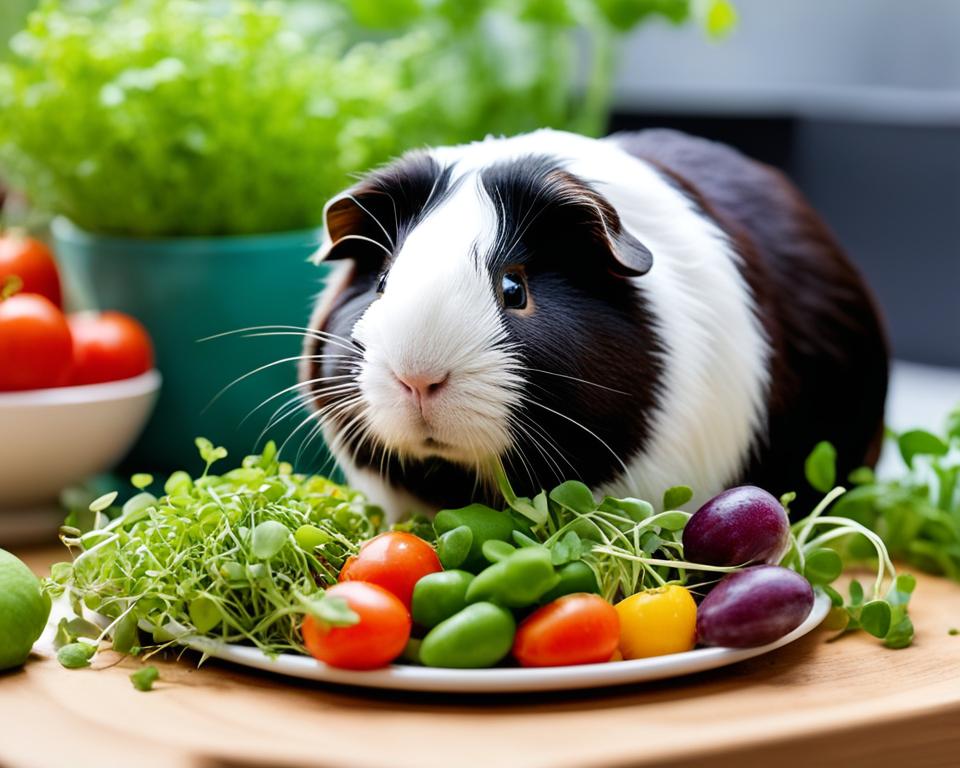
Potential Benefits of Microgreens for Guinea Pigs
Microgreens can offer several benefits to guinea pigs and their overall health. Here are some of the potential advantages:
Increased variety in diet
Adding microgreens to your guinea pig’s diet can introduce new flavors and textures, providing them with a more diverse range of foods to eat.
Added nutrients
Microgreens contain high levels of vitamins and minerals that can benefit your guinea pig’s health. Some of these nutrients include vitamins A, C, and K, calcium, iron, and potassium.
Potential dental benefits
Chewing on microgreens can help wear down your guinea pig’s teeth, which are constantly growing. This can prevent dental issues and promote overall oral health.
It’s important to note that while microgreens offer potential benefits, they should not replace other essential foods in your guinea pig’s diet. Always consult with a veteranarian before making any significant changes to your guinea pig’s diet.
Next, we’ll discuss the risks and considerations involved in feeding microgreens to guinea pigs.
Risks and Considerations
Feeding your guinea pig microgreens can offer added nutrients and variety in their diet, but it’s important to be aware of potential risks and considerations. Here are some common concerns to keep in mind:
Allergies
Just like humans, guinea pigs can have allergies to certain foods. If you’re introducing microgreens to your guinea pig’s diet for the first time, start with a small portion and observe any signs of allergic reactions, such as sneezing, itching, or swelling.
Digestive Issues
Guinea pigs have delicate digestive systems, and certain foods can cause digestive issues such as bloating, diarrhea, or constipation. When introducing microgreens to your guinea pig’s diet, start with small portions and gradually increase the amount over time. Observe your guinea pig’s behavior and digestive health to ensure they are tolerating the microgreens well.
Potential Pesticide Residues
Some microgreens may contain traces of pesticides or other chemicals if they were grown using conventional farming methods. To minimize this risk, choose organic or pesticide-free microgreens whenever possible. Also, be sure to thoroughly wash and rinse the microgreens before feeding them to your guinea pig.
Overall, incorporating microgreens into your guinea pig’s diet can offer several potential benefits, but it’s important to proceed with caution and awareness of these risks and considerations. always consult with a veterinarian for personalized advice based on your guinea pig’s specific needs.
Conclusion
In conclusion, it is safe and beneficial for guinea pigs to consume microgreens as part of a well-balanced diet. These young vegetable greens are nutrient-dense and offer a variety of vitamins, minerals, and antioxidants that can help promote your guinea pig’s overall health and wellness.
It is important to choose safe varieties of microgreens, introduce them gradually, and monitor your guinea pig’s response. Consulting with a veterinarian can provide personalized advice based on your guinea pig’s specific needs.
By incorporating microgreens responsibly, you can give your guinea pig added nutrition and variety in their diet. Remember to always prioritize the health and well-being of your furry friend and consult with a veterinarian before making any changes to their diet.
FAQ
Can guinea pigs safely consume microgreens?
Yes, guinea pigs can safely consume microgreens. However, it’s important to select safe varieties and introduce them gradually to avoid any potential digestive issues. Consult with a veterinarian for personalized advice.
What are microgreens?
Microgreens are young vegetable greens that are harvested just after the first true leaves have developed. They are packed with nutrients and offer vibrant flavors and textures.
What are the basics of a guinea pig’s diet?
Guinea pigs are herbivores and their diet should primarily consist of hay, fresh vegetables, and a small amount of pellets. It’s important to ensure their diet is rich in vitamin C, fiber, and other essential nutrients.
What is the nutritional value of microgreens?
Microgreens are nutrient-dense and offer a range of vitamins, minerals, and antioxidants. They can be a beneficial addition to a guinea pig’s diet, but it’s important to understand their specific nutritional benefits.
How do I choose safe microgreens for my guinea pig?
When selecting microgreens for your guinea pig, it’s important to choose safe varieties that are free from pesticides and other harmful substances. Consult with a veterinarian or do thorough research before making your selection.
How should I introduce microgreens to my guinea pig’s diet?
Introduce microgreens gradually into your guinea pig’s diet to allow their digestive system to adjust. Start with small portions and monitor their response. If any digestive issues arise, consult with a veterinarian.
What are the potential benefits of microgreens for guinea pigs?
Incorporating microgreens into a guinea pig’s diet can provide increased variety, added nutrients, and potentially dental benefits. They can contribute to a well-rounded and nutritious diet.
Are there any risks or considerations when feeding guinea pigs microgreens?
While guinea pigs can safely consume microgreens, there are some risks and considerations to be aware of. These include allergies, digestive issues, and the presence of pesticide residues. Take precautions and consult with a veterinarian to mitigate these risks.

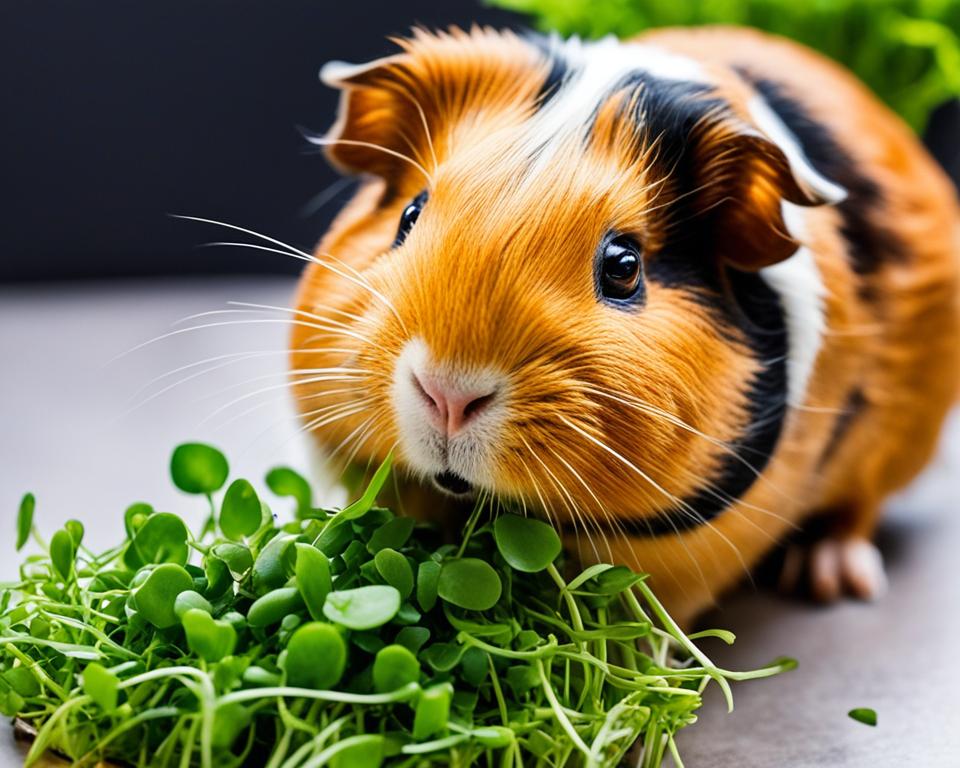
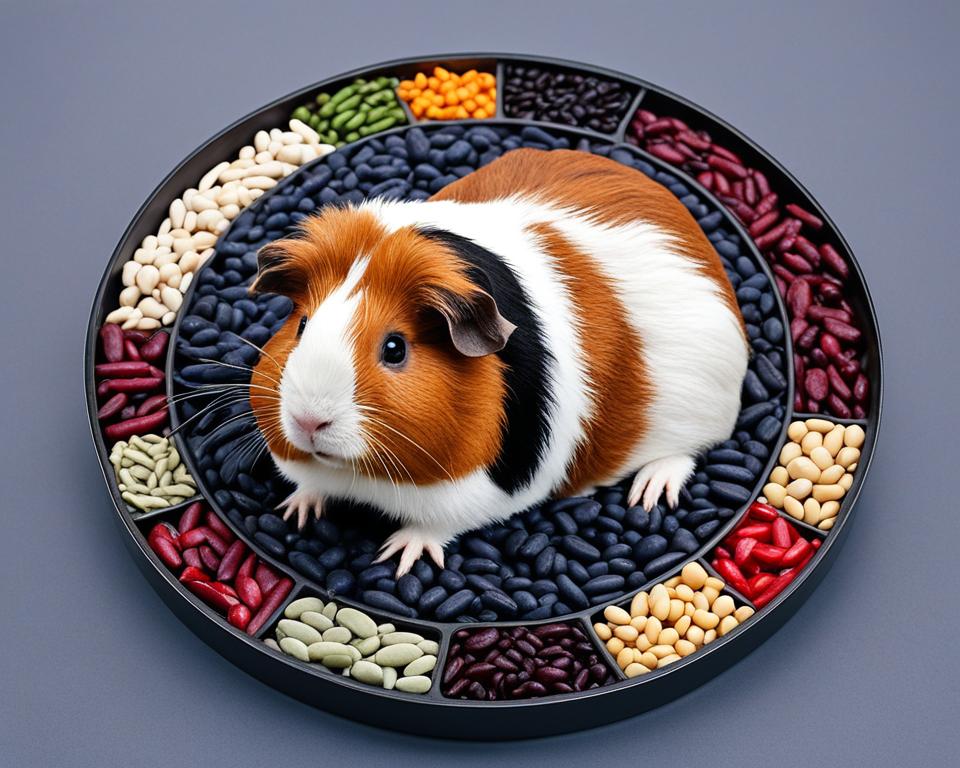
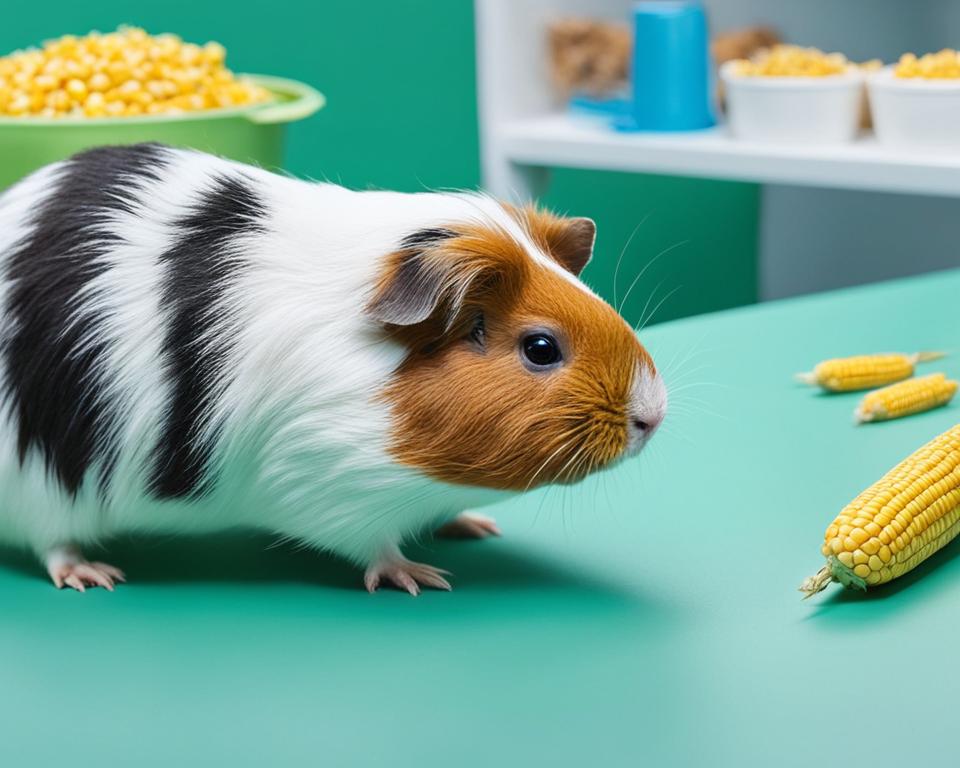
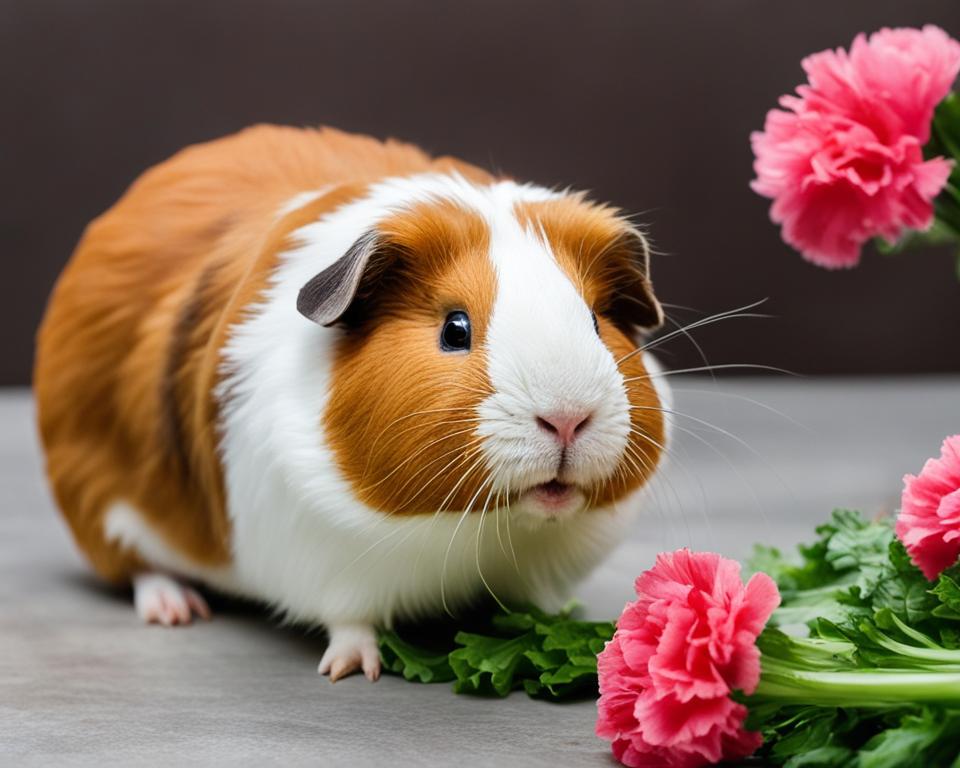
Leave a Reply